Smoking and Tobacco
Admiral Cigarettes Film
The cigarette genie appears!
Posted By: Paul - Mon Nov 23, 2020 -
Comments (2)
Category: Magic and Illusions and Sleight of Hand, Advertising, Smoking and Tobacco, Nineteenth Century
Trim Reducing-Aid Cigarettes
The Cornell Drug Corporation came out with Trim Cigarettes in 1958, claiming that smoking three of them a day would reduce appetite and thereby help with weight loss:The FDA promptly banned them. More info: wikipedia


Miami News - May 16, 1958
Posted By: Alex - Sat Nov 14, 2020 -
Comments (0)
Category: Smoking and Tobacco, 1950s, Dieting and Weight Loss
A silly millimeter longer
In 1966, Benson & Hedges introduced the "100" — an extralong, 100-millimeter cigarette. Their tongue-in-cheek commercials focused on the supposed disadvantages of such a long cigarette.Not to be outdone, the makers of Chesterfields responded by introducing the "101", which was 101 millimeters long. As they put it, it was a "silly millimeter longer."
As far as I know, no one ever introduced a "102" cigarette.
Posted By: Alex - Fri Sep 04, 2020 -
Comments (5)
Category: Smoking and Tobacco, 1960s
Cockroach trained to carry cigarettes
1938: Prisoners in solitary confinement in Amarillo, Texas figured out how to get cigarettes by training a cockroach to carry them under the cell door.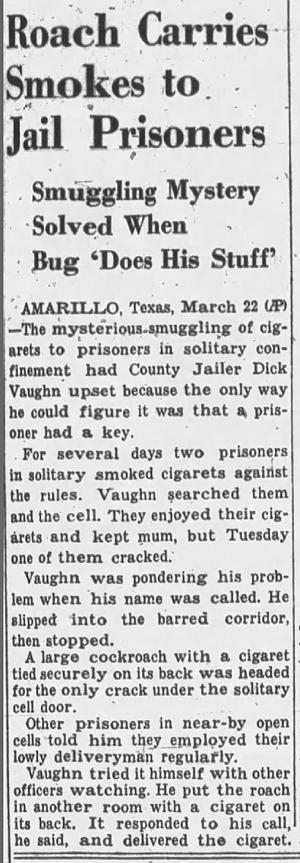
Salt Lake Tribune - Mar 2, 1938
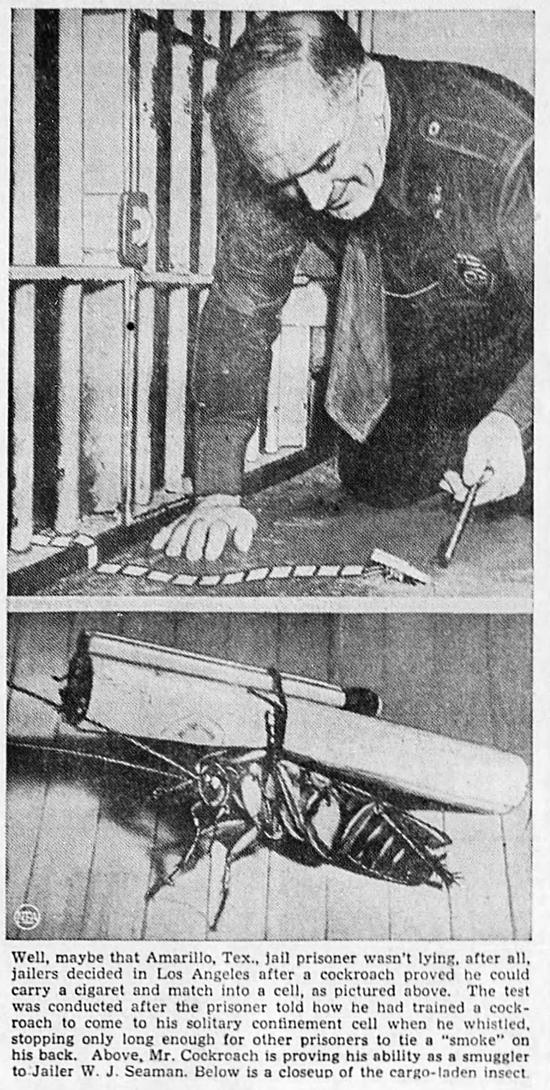
Klamath News - Apr 9, 1938
Posted By: Alex - Mon Aug 17, 2020 -
Comments (1)
Category: Prisons, Smoking and Tobacco, 1930s
Follies of the Madmen #483
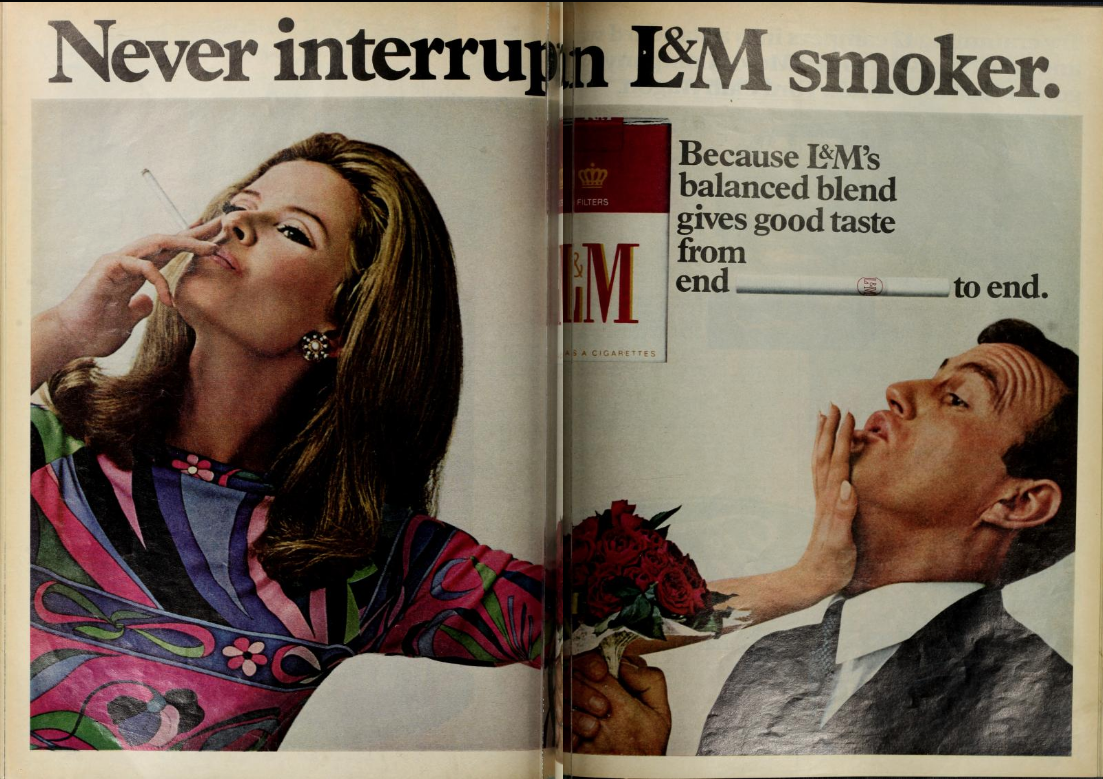
Our product turns you into an arrogant jerk.
Source.
Posted By: Paul - Sun Jul 19, 2020 -
Comments (3)
Category: Business, Advertising, Emotions, Smoking and Tobacco, 1970s
James Bond’s Cigarettes
According to Ian Fleming's books, James Bond was a heavy smoker, consuming 60-70 cigarettes a day. By my quick calculations, that means Bond smoked a new cigarette about every 15 minutes.Bond was also loyal to a specific brand: Morland cigarettes. These were custom cigarettes created specifically for him by Morland & Co. of Grosvenor Street from a blend of Balkan and Turkish tobacco. They had three gold rings around the butt.
These were real cigarettes which one could buy, and which Fleming himself smoked. They were sold as the "James Bond Special No. 1". However, you can't buy them anymore since the company went out of business soon after Fleming's death.
More info: Fleming's Bond
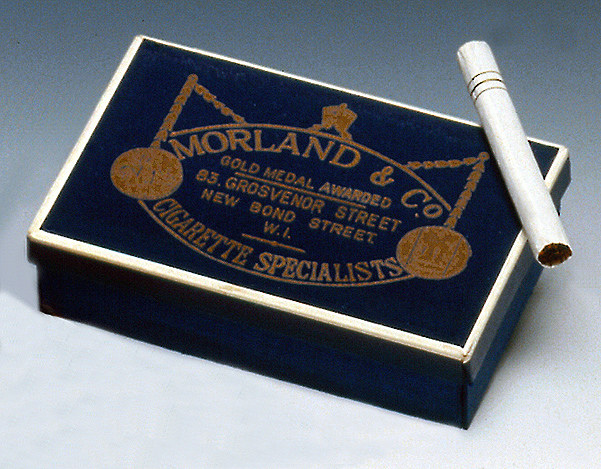
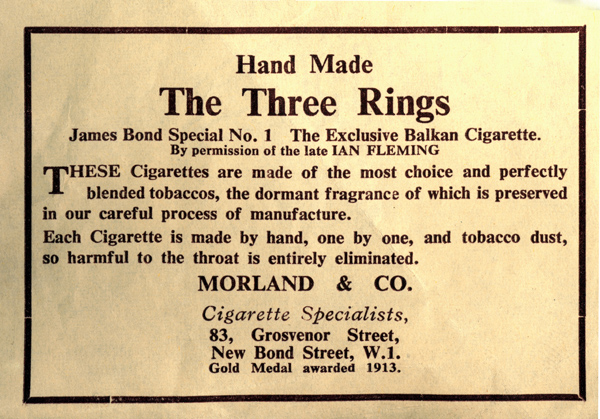
Posted By: Alex - Fri Jun 19, 2020 -
Comments (6)
Category: Literature, Smoking and Tobacco
Let’s try to stop smoking!!!!!!
Capitol Records released this album in 1964, on the heels of the Surgeon General's report detailing the harmful effects of smoking. Apparently that report inspired a fad for anti-smoking records. (See our earlier post about the 1964 album Music To Help You Stop Smoking).The Capitol Records release claimed to help listeners kick the smoking habit by hypnotizing them. The hypnotist was said to be a doctor, but for reasons of professional ethics he didn't reveal his identity, instead using the pseudonym Scott Gordon.
Discogs.com notes, "The title has one exclamation point on the back of the jacket and spine, no exclamation point on the label, and 6 on the front of the jacket."

Although I couldn't find any audio clips from the record online, I did come across this video posted by a British dance company in which they perform to a brief excerpt of Scott Gordon hypnotizing listeners.
Posted By: Alex - Tue Mar 31, 2020 -
Comments (2)
Category: Smoking and Tobacco, 1960s
Music to help you stop smoking
An album released in 1964. The Phoenix New Times offers some info about it:
Wikipedia has some info about The Living Strings:
There was no actual orchestra known as the Living Strings. The orchestra for most of the recordings was made up of musicians from various British orchestras assembled for the purpose of making the records.
I couldn't find any tracks from "Music to help you stop smoking" on YouTube, but apparently you can listen to the entire album on Spotify, if you have access to that (which I don't).
Posted By: Alex - Tue Mar 17, 2020 -
Comments (3)
Category: Music, Smoking and Tobacco, 1960s
Dissuasive Cigarettes
Public health warnings have been printed on cigarette packs since 1966 (in the U.S.). But recently, public health researchers have been wondering whether altering the appearance of the cigarettes themselves might be more effective. In a study published in the 2016 issue of the journal Tobacco Control, New Zealand researchers tested the response of smokers to a variety of “dissuasive cigarettes.”One of these cigarettes had a “smoking kills” warning printed directly on it. Two others were unpleasant colors: "slimy green" and "faecal yellow-brown." The fourth was printed with a graphic depicting "15 minutes of life lost."
The researchers found that the smokers they surveyed reacted negatively to all four of the dissuasive cigarettes, but had the strongest negative reaction to the "15 minutes of life lost" cigarette:

Posted By: Alex - Tue Jan 28, 2020 -
Comments (2)
Category: Psychology, Smoking and Tobacco
Opiated Hash
You might think that ‘opiated hash’ would be marijuana laced with opium. But not so. According to Cincinnati policeman Carl Rauschenberger, in a 1970 interview, it was “droppings from guinea pigs which had been fed marijuana.” Presumably people were smoking these droppings.The clipping below also contains a curious claim about kids supposedly injecting peanut butter or mayonnaise into their veins. I've looked into that claim at some length over at the Museum of Hoaxes.

Cincinnati Enquirer - June 7, 1970
Posted By: Alex - Tue Nov 12, 2019 -
Comments (1)
Category: Drugs, Smoking and Tobacco

| Who We Are |
|---|
| Alex Boese Alex is the creator and curator of the Museum of Hoaxes. He's also the author of various weird, non-fiction, science-themed books such as Elephants on Acid and Psychedelic Apes. Paul Di Filippo Paul has been paid to put weird ideas into fictional form for over thirty years, in his career as a noted science fiction writer. He has recently begun blogging on many curious topics with three fellow writers at The Inferior 4+1. Contact Us |




